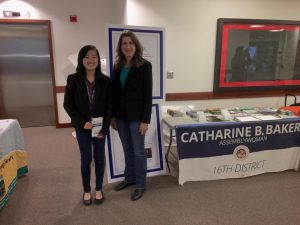Getting behind the wheel on Uber’s self driving cars
November 4, 2016
Companies in the automotive industry have been racing to build self-driving cars.
Earlier in August, Uber launched a fleet of autonomous Ford Fusions in Pittsburg for testing. So far no major accidents have been reported, but the testing field is very limited, and human intervention is required in many situations, such as bad weather.
“Even when these technology issues get fixed, we believe ridesharing will be a mix — with services provided by both drivers and self-driving Uber cars. This is because of the limits of self-driving software and the skyrocketing demand for better transportation which people-powered transport is uniquely able to solve,” said Anthony Levandowski founder of Otto and Vice President of Self-Driving Technology in Uber.
To distribute driverless cars, customers request a car the usual way, with the Uber app, and then are matched up at random with a driverless car. These rides are free for now, and experts predict that in the long run, these cars will significantly decrease the per-mile cost of driving.
Recently, Uber has expanded its car testing to San Francisco. A handful of cars equipped with advanced driver safety and self-driving technology are now being tested in the Bay Area, an Uber spokesperson told TechCrunch.
Unlike Google and Tesla, Uber will not manufacture their own autonomous cars. Instead, it is partnering with car manufacturers, starting with Volvo. It has also acquired Otto, a small driverless truck startup which has technology that will help improve Uber car capabilities.
However, Uber still has a lot of competition in the industry.
Alphabet, a Google-based car company, has been working on autonomous car technology for more than seven years now. It recently hit the milestone of having driven a total of two million miles on public roads.
“That’s a collective 300 years of driving,” an Alphabet spokeswoman said, “during which the cars have navigated hundreds of millions of interactions with vehicles, pedestrians, and cyclists.”
Google has made many advancements since it began the testing. The technology can now recognize pedestrians and cyclists, detect hundreds of objects simultaneously and even read hand gestures.
Lyft, Uber’s long-standing ridesharing rival, will be testing Chevrolet Bolt self-driving taxis early next year. The plan was hatched when General Motors Co. invested $500 million in Lyft to develop these electric cars.
Ethics is a major issue of self-driving cars. These vehicles are essentially programmed to kill, since in an accident they have to decide who is harmed — the passenger or people in other cars. “One of the questions that comes up in class discussions is whether, as a driver, you should be able to program a degree of selfishness, making the car save the driver and passengers rather than people outside the car,” said Ken Shotts, a professor of political economics at Stanford
Overall, the industry will only continue to grow and benefit society. Researchers have shown that computerized drivers may reduce the amount of lives lost in traffic accidents, which kill 1.3 million people per year. They may also free up the 20 percent more space in cities that are currently used to park the billions of cars in the world, and save trillions of dollars each year by cutting congestion.



